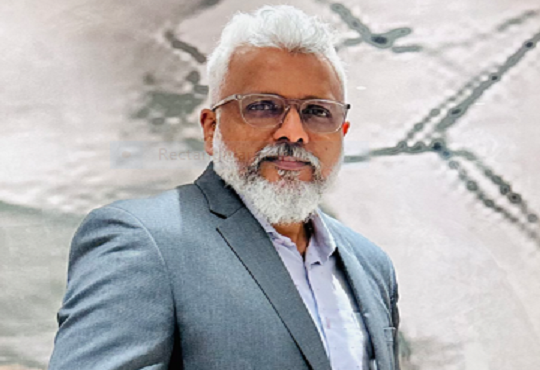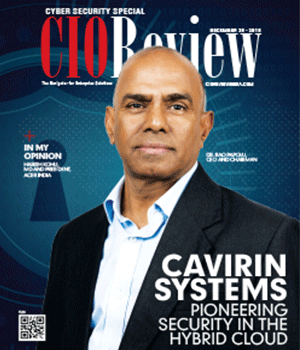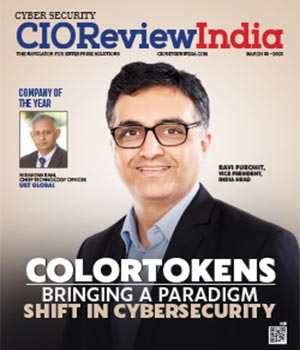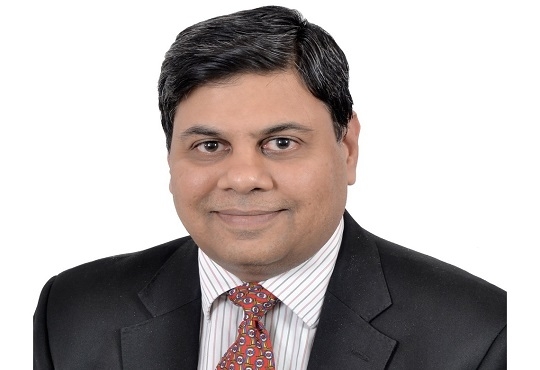
Businesses Report All-Time High Levels of Fraud, Cyber, and Security Incidents During 2017
CIOReview Team | Wednesday, 24 January 2018, 10:45 IST
 Fraud, cyber, and security risks are at an all-time high, according to senior corporate executives surveyed worldwide for the 2017/18 Kroll Annual Global Fraud & Risk Report. The proportion of executives reporting that their companies fell victim to at least one instance of fraud over the past 12 months increased to 84%, from 82% in the previous survey. Levels of reported fraud have steadily risen every year since 2012, when the reported occurrence was just 61%. An even greater percentage of executives surveyed (86%) said their companies had experienced a cyber-incident or information theft, loss, or attack over the past 12 months, slightly up from 85% in 2016. Seven in 10 respondents (70%) reported the occurrence of at least one security incident during the past year, compared to 68% in the previous survey. North America and Europe were the most affected with 92% of respondents affected by fraud, up from 83% in 2016.
Fraud, cyber, and security risks are at an all-time high, according to senior corporate executives surveyed worldwide for the 2017/18 Kroll Annual Global Fraud & Risk Report. The proportion of executives reporting that their companies fell victim to at least one instance of fraud over the past 12 months increased to 84%, from 82% in the previous survey. Levels of reported fraud have steadily risen every year since 2012, when the reported occurrence was just 61%. An even greater percentage of executives surveyed (86%) said their companies had experienced a cyber-incident or information theft, loss, or attack over the past 12 months, slightly up from 85% in 2016. Seven in 10 respondents (70%) reported the occurrence of at least one security incident during the past year, compared to 68% in the previous survey. North America and Europe were the most affected with 92% of respondents affected by fraud, up from 83% in 2016.
India witnessed a significant increase with 89% of executives reporting that their companies were victim to at least one instance of fraud over the past 12 months, up from 68% in 2016. India also witnessed the highest incidence of fraud globally across three categories - Theft of physical asset or stock (40%), IP theft, piracy or counterfeiting (36%) and Corruption and bribery (31%). Further in five of the eleven categories, India witnessed an increase in percentage of respondents affected by fraud indicating that risk of fraud is both widespread and in different forms.
The report revealed that most common perpetrators of fraud incidents in India over the past 12 months were joint venture partners with 45% respondents naming them as the primary perpetrators. This is a shift from past year’s finding when current and former employees were the main perpetrators of fraud within a company. This year, junior employees were the second most common perpetrators causing fraud incidents (43% respondents).
In same vein, 40% of Indian respondents felt that increased collaboration between firms (joint-ventures, partnerships etc.) was the main reason behind increased exposure to fraud. However, a high proportion of respondents (38%) also attributed increasing exposure to public digital touch points (e.g., employee’s social media use, personal computer use, etc.) as the reason. Globally, high staff turnover and increased outsourcing and offshoring were the main reasons behind increased exposure to fraud.
Reshmi Khurana, Managing Director and Head of South Asia for Kroll, said; “In India, the percentage of respondents affected by fraud increased significantly by 21% in 2017 to 89% while the global average this year is 84%. However, when all participants of the survey were asked whether they had been dissuaded from operating in a particular jurisdiction, India’s position improved in 2017, with only 9% of respondents (vs 19% in 2016) claimed that they were being dissuaded from operating in the country. This suggests that while the risk of fraud remains high, India has improved its position as a preferred investment destination. Investing is an art and investors must manage and ride the associated risks.”
Reshmi Khurana says both new and experienced investors can minimize fraud, cyber and security risks by:
· Starting with a deep and qualitative assessment of the operating environment and potential partners
· Understanding the full dynamics of the business, cyber and geopolitical environment of the country in which they are investing
· Not getting swayed by the competitive pressures of the investment environment
· Not compromising on the independence and integrity of the due diligence process
|
Key highlights of fraud among Indian companies surveyed in 2017 |
India Average |
Global Average |
|
Fraud |
89% of respondents affected by fraud in the past 12 months 21% point above 2016 5% point above global average of 84% |
|
|
Most Common Types of Fraud |
||
|
Theft of physical assets or stock |
40% |
27% |
|
IP theft (e.g., of trade secrets), piracy, or counterfeiting |
36% |
20% |
|
Market collusion (e.g., price fixing) |
36% |
19% |
|
Cyber Security |
84% of respondents experienced a cyber-attack in past 12 months 2% below global average |
|
|
Most Common Target |
||
|
Customer records |
55% |
48% |
|
Employee records |
55% |
41% |
|
Trade secrets/R&D/IP |
55% |
40% |
As much as 33% of respondents in India suggested that the extent of loss suffered by their company due to fraud was more than 7% of the revenues. This is significantly higher than 23% of respondents witnessed globally. Mexico was the only country where a larger proportion of respondents suffered loss of over 7% of revenues due to fraud (39% respondents).
Tarun Bhatia, Managing Director, Kroll South Asia, commented: “The silver lining for India is that while higher proportion of companies witnessed fraud during 2017, increasing number of companies are also becoming aware of risks related to fraud and are taking preventive measures to tackle the issue. In India, a growing proportion of participants stated that they were addressing fraud risks through a combination of measures with most common being better financial controls (50% in India, compared to 42% globally), IT security (53% in India, compared to 44% globally) and due diligence on partners, clients, and vendors (40% in India compared to 30% globally). In coming years, however, combating information security risks would gain priority as fraud risk due to information theft is only likely to increase as India chases its digitization dream."
Cyber security remains an area of concern with 84% of Indian respondents saying they have experienced a cyber-attack in the past 12 months, indicating an 11% point increase from 2016 (73%). The Kroll Report reveals that respondents are experiencing a heightened sense of vulnerability to fraud, cyber, and security risks, with information-related risks now being the area of greatest concern. 49% of respondents in India felt they were most vulnerable to information theft, loss or attack (e.g., data theft). This is similar to the global view with highest proportion of respondents feeling most vulnerable to information theft, loss or attack (24%).
CIO Viewpoint
From VPNs to Zero Trust: The Transition to a...
By Shankar Venkatesan, Senior IT Leader, Avalon Technologies
The Cyber Security Spar in Integrating IT and...
By Vimal Goel, CIO, HPCL-Mittal Energy
Towards Cyber Resilience: A Data-Centric...
By Puneet Gupta, Vice President & Managing Director, NetApp India/SAARC
CXO Insights
Emerging Trends, Challenges & Future Prospects...
By Sujoy Brahmachari, CIO & CISO, Rosmerta Technologies
Exploring Data-First Security and Automation in...
By Maheswaran S, Country Manager - S.Asia, Varonis Systems
Securing IT-OT Converged Infrastructure




.jpg)
.jpg)
.jpg)







